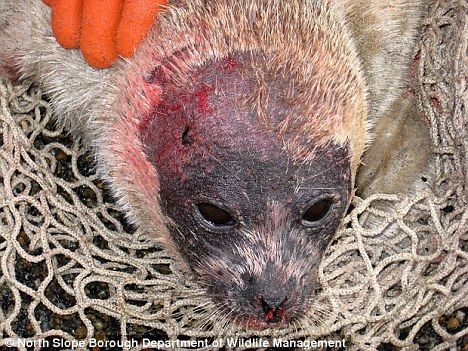
- Seals washed up with hair loss and bleeding lesions
- 9.0-magnitude quake caused meltdown at Japanese plant in March
Scientists in Alaska are investigating whether seals are being killed by radiation from Japan's crippled Fukushima nuclear plant.
Scores of ring seals have washed up on Alaska's arctic coastline since July either injured or killed by a mysterious disease which biologists first thought was a virus.
But the bleeding lesions on the hind flippers, irritated skin around the nose and eyes and patchy hair loss on the seals' fur coats may have been caused by radiation from the stricken nuclear plant.
Three reactors at the nuclear plant went into meltdown following the catastrophic tsunami caused by an 9.0-magnitude earthquake off Japan's north-east coast in March.

John Kelley, Professor Emeritus at the Institute of Marine Science at the University of Alaska Fairbanks, said: 'We recently received samples of seal tissue from diseased animals captured near St. Lawrence Island with a request to examine the material for radioactivity.
'There is concern expressed by some members of the local communities that there may be some relationship to the Fukushima nuclear reactor's damage.'
The results of the tests would not be available for 'several weeks,' Kelley said.
Water tests have not picked up any evidence of elevated radiation in U.S. Pacific waters since the March earthquake and tsunami in Japan, which caused multiple fuel meltdowns at the Fukushima plant and forced tens of thousands of people to evacuate the surrounding area.
Scientists from the National Oceanic and Atmospheric Administration and the U.S. Fish and Wildlife Service have been seeking the cause of the diseased seals for weeks, but have so far found no answers.



Reader Comments
to our Newsletter